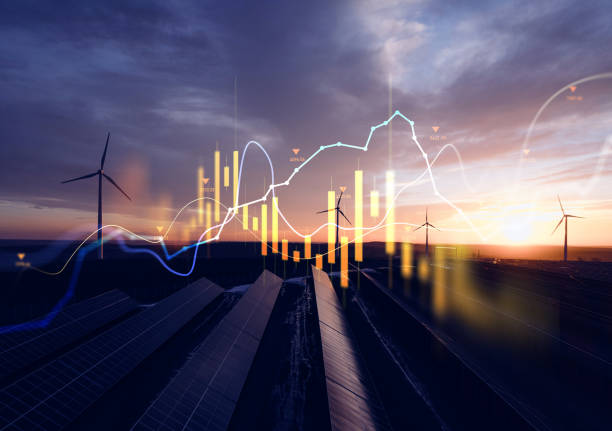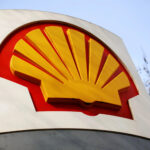European natural gas prices got a shot in the arm last Friday after China’s Commerce Ministry hinted it was “assessing”whether to resume trade talks with the United States. That unexpected glimmer of détente sent energy traders rethinking their positions, reversing earlier losses and fueling a broader rally across commodity markets.
A Roller-Coaster Week for Gas Futures
Benchmark Dutch front‑month futures, Europe’s go‑to gauge for natural gas, swung wildly before settling up 2.1% at €32.83/MWh by mid‑morning in Amsterdam. That gain erased a slide earlier in the session and left prices about 1.2%higher on the week. After plunging nearly 20% in the past month amid fears that a US–China tariff war would crimp global energy demand, gas benchmarks look to have found a floor—for now.
Trade Tensions and Energy Demand
Since Washington imposed fresh tariffs on Chinese goods, investors have fretted that any slowdown in trade would cool manufacturing, dampen industrial output, and ultimately sap energy consumption worldwide. Europe felt the pinch: prices fell from spring highs as LNG cargoes diverted to Asia slowed, too. Now, just the possibility of a U.S.–China thaw has reversed that trend. Traders see fewer trade barriers as a green light for factories to crank up production—and power plants to burn more gas.
How Asian LNG Flows Affect Europe
Asia’s appetite for liquefied natural gas (LNG) has dipped by about 10% compared with last year, leaving more cargoes available for Europe. With prices in Northeast Asia trading at a discount to European rates, suppliers have been eagerly redirecting ships westward. That extra LNG has helped refill European gas storage sites at a pace not seen since before the Russian pipeline cuts in 2022.
“Europe is making solid progress in replenishing its underground stocks,” say Erisa Pasko and James Waddell, analysts at Energy Aspects Ltd. Yet they caution that lingering uncertainty around Russian supplies—and the planned retirement of coal‑fired power stations—could trigger sharp price spikes this winter.
Summer Discount Spurs Inventory Builds
Another twist: summer gas contracts are now trading marginally below winter delivery prices. Ordinarily, European gas is pricier in winter when demand for heating soars. This inverse summer‑winter spread gives traders a powerful incentive to buy now, lock in the lower rate, and stuff as much gas into caverns as they can before the chill sets in.
Debates Over EU Storage Targets
Brussels has been quietly discussing whether to ease the bloc’s strict gas‑storage mandates, which currently require member states to fill at least 80% of their facilities by November 1. Some market players speculate these targets might soften, meaning countries wouldn’t need to purchase as much gas this summer. For now, though, national operators are pressing ahead—pumping record volumes into storage to guard against the uncertainty of winter.
Beyond Europe: The Global Energy Picture
It’s not just Europe on edge. Global benchmarks like Henry Hub in the U.S. and JKM in Asia have also bounced on Friday’s optimism. Oil and coal prices followed suit, reflecting traders’ broader view that any thaw in trade relations could lift commodity demand across the board. Even electricity markets in the Nordics and Central Europe showed renewed strength, as power prices often track gas.
What Lies Ahead: Winter Worries Remain
Despite Friday’s rally, dark clouds loom over the European energy outlook:
- Russian Supply Risk: Moscow has kept Nord Stream flows below pre‑war levels. Any further cut‑offs would force Europe to lean even harder on LNG, driving prices sky‑high.
- Storage Uncertainty: If gas injections slow—whether from warmer weather or policy changes—stocks might fall short of safe levels by winter’s start.
- Coal Phase‑Out: As EU countries retire coal plants, the cushion for extreme cold snaps shrinks, making gas demand surges more dramatic.
These factors mean that while traders celebrate Friday’s bounce, they’re also watching every pipeline announcement, every policy tweak in Brussels, and every whisper out of Beijing and Washington.
How This Affects You
- Home Heating Bills: If wholesale prices climb, utilities may pass on higher costs to consumers this winter.
- Industrial Costs: Manufacturers reliant on gas could see energy bills spike, potentially feeding into higher prices for goods.
- Investment Moves: Energy stocks, ETFs, and commodity funds may outperform broader markets—keeping an eye on trade headlines could pay off.
In the end, Europe’s gas market remains a high‑wire act. Friday’s rebound shows how deeply trade policy can ripple through energy prices. But as winter approaches, the region’s success in topping up storage—and the state of US–China relations—may well decide whether households stay cozy or shiver through sticker‑shock heating bills.
Read Also: Shell Launches Bold $3.5 Billion Share Buyback After Crushing Q1 Earnings Targets






